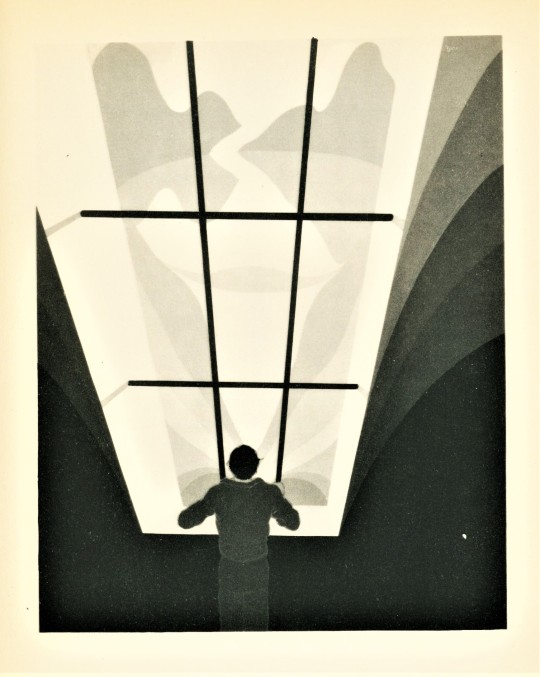#incarceration
Text
UPDATE: turning off reblogs since voting is over for this cycle
this is absolutely not a "go vote or you're evil!" post BUT you should know that if you're registered to vote in Oregon, Alabama, Louisiana, Tennessee, or Vermont you have the opportunity to vote to abolish prison slavery this year, and i think you should strongly consider it.
from the washington post:
"The 13th Amendment of the U.S. Constitution bans slavery or involuntary servitude, except when it is used as punishment for a crime.
If passed, the proposals would wholly abolish slavery in those states, though they would not automatically change protocols on prison labor or inmate pay.
[...] the bills could give lawyers more license to pursue greater rights and higher pay for U.S. prisoners; Dolovich said that paying inmates below the minimum-wage protections set by each state is arguably 'a species of slavery.'
'It’ll be a fight in court. This question will be manifested by lawyers bringing cases on behalf of incarcerated workers,' she said. 'It’s a hopeful sign for me.'"
(Source; warning for more detailed discussion of prison slavery and related cruelty in the article)
so again, if you're able to vote and live in Oregon, Alabama, Louisiana, Tennessee, or Vermont, please consider it. prison abolition will not happen solely via voting it away but if these pass it will certainly be a victory and hopefully a stepping stone for other victories.
#prison abolition#prison labor#slavery#upload#edit: you know what you're right. i'll slap a tag on here for non usamericans#us centric#incarceration#antiblackness
6K notes
·
View notes
Text
things you should know about books and incarceration
I recently started working with a program that sends books to incarcerated people upon request. There are programs like this in many places throughout the US, under names like “Prison Books Project” or “Books to Prisoners.” Here’s some things you should know:
The most requested book, by far, is the English dictionary. The Spanish dictionary is also highly requested, as are GED prep materials, thesauruses, almanacs, and other reference books. If you have anything like that laying around unused, please consider donating.
Prisons are legally required to maintain libraries of legal resources (this falls under one’s right to counsel), but otherwise generally do not fund or maintain libraries, even for basic educational materials. The law libraries are also often filled with irrelevant law texts (e.g. real estate and civil procedures) instead of what prisoners actually need information about: appeals, civil rights, etc.
There are strict requirements on what books can and cannot be received, which vary from prison to prison and even depending on which staff member is processing the shipments. There are a thousand different reasons prison staff can pull a book from a shipment. Individuals, unfamiliar with the complex restrictions, are often unsuccessful at sending books to incarcerated loved ones.
Prison staff often don’t like prison book programs, despite the fact that they reduce recidivism and keep prisoners occupied and out of trouble. Why? Because it makes more work for them in the mail room. Yes, really.
Immigrants are the fastest growing prison population, so we get lots of requests for books in Spanish or English learning materials. Unfortunately, these are less frequently donated, so our selection is slim.
We also get requests for books about sign language, usually from people with Deaf cellmates who have no other way to communicate.
Books about starting businesses, trades, and reintroduction are extremely common from those planning their lives after release. It’s extremely difficult for convicted felons to find work after release.
We also get many requests about psychology or self-help books. A large percentage of our incarcerated population suffer from some mental illness or have loved ones who do.
Many prisoners were not properly supported in their education. We receive letters from low-literacy people who have severe learning disabilities, whose letters are difficult to read because they never learned to write properly. Comic books/manga are common requests from low-literacy people because they can look at the pictures.
Prison book programs are usually not well funded and must ration how often incarcerated people can write us and how often they can request certain types of high-demand books. Volunteers frequently find there are no suitable books to fill a request and buy books with their own money to make sure someone gets what they’ve asked for. Cash donations to prison book programs will go to buying high-demand books such as dictionaries, GED prep, and other basic education texts.
See if you have a program like this in your area, and consider volunteering or donating books or money. There are over 2 million people incarcerated in the US, and giving them access to books is the very least we can do.
16K notes
·
View notes
Text
A study from The University of Texas at El Paso reveals a gender disparity in prison infractions that disproportionately affects women.
The study, led by Melinda Tasca, Ph.D., an associate professor in the Department of Criminal Justice and Security Studies at UTEP, and published in Justice Quarterly, analyzed the disciplinary infraction records of more than 20,000 males and females in a large western state prison, who were released between 2010 and 2013.
The researchers set out to answer three questions: 1) whether women were more likely than men to receive defiance infractions; 2) whether women received a greater number of defiance infractions than men; and 3) whether the gender differences observed for defiance were unique from other types of infractions (e.g., nonviolent and violent).
Defiance acts are the most minor of rule violations and are often verbal in nature, including disrespect, being disruptive or disobeying an order. Defiance infractions can also come as the result of committing unallowed consensual contact, unauthorized altering of one's appearance, or failing to adhere to hygiene requirements.
"Despite being minor violations, defiance infractions can have profound consequences," Tasca said. Individuals found guilty of defiance infractions may be subject to solitary confinement, be denied phone calls and visits with loved ones, and be negatively impacted when it comes to parole board decisions.
Continue Reading.
262 notes
·
View notes
Text

#jokes#bad jokes#puns#rainbows#tw prison#incarceration#dad jokes#but my mom sent this in the family group chat so#mom jokes
374 notes
·
View notes
Text
Legality ≠ morality
#abolition#abolitionist#acab1312#acab#abolish the police#abolish the state#abolish police#abolish ice#abolish prisons#abolish family policing#leftist theory#leftist#abolish landlords#abolish capitalism#abolish the supreme court#1312#human rights#incarcerated people#incarceration#cripple punk#cripplepunk#chronically couchbound#fuck 12
278 notes
·
View notes
Text

Who is left out when we narrate the story of Palestine? - Zena Agha, Skin Deep Magazine, 8/8/22
The pieces in [PALESTINE: WAYS OF BEING] are efforts to shape our future. They shed light on three un- and under-explored areas of Palestinian life: queerness, incarceration and Blackness. Looking at where we came from and where we’re going, they expand on some of the ways of being Palestinian today.
Tareq Baconi: Dreams of a Palestine where I can hold myself whole
Living in a time not mine: An anonymous letter from inside an Israeli prison
Mousa Qous: In the heart of the Old City, generations of Afro-Palestinians persevere in the face of occupation
Samah Fadil: Putting the pieces together: Fragments of oral history in exile
illustration by Aude Nasr @audenasr
#palestine#free palestine#afro palestinian#queer palestine#lgbtq#incarceration#aude nasr#tereq baconi#mousa qous#samah fadil#zena agha#Skin Deep Magazine#palestine will be free#l3 host post
69 notes
·
View notes
Text
40% of the male population in Palestine has spent time in an Israeli prison.
𝟒𝟎 𝐅𝐔𝐂𝐊𝐈𝐍𝐆 𝐏𝐄𝐑𝐂𝐄𝐍𝐓. And this is before the current conflict. To put that in perspective American is frequently said to have the "highest incarceration rate in the world" and the estimate is that 9% of men will be in prison at some point here (still insanely high). Who could live in these conditions?! Of course Palestine is fighting back, who wouldn't?!
#palestine#free palestine#from the river to the sea palestine will be free#fuck israel#gaza#free gaza#israel#genocide#israel is a terrorist state#incarceration#incarcerated people#colonialism#settler colonialism#israeli apartheid#israeli terrorism
55 notes
·
View notes
Text
a Black, formerly incarcerated trans woman shares what it is like re-entering society after imprisonment, where she learned about restorative justice practices, and how this all relates to racism
#reaux speaks#undescribed#resources#bipoc#trans#trans women#misogynoir#queer#incarceration#imprisonment#black liberation
65 notes
·
View notes
Text
The number of incarcerated young offenders in British Columbia has fallen so dramatically that the province needs to come up with a plan to reallocate resources to avoid waste, a report released Thursday says.
The report from the office of Jennifer Charlesworth, B.C.'s representative for children and youth, says the average daily number of youth in custody in the province has fallen from 386 in 1997-98 to as low as 11 in 2021-22.
The "dramatically decreased" figures meant there were 11 staff for every youth in custody at dedicated facilities.
Full article
Tagging: @politicsofcanada
#cdnpoli#canada#canadian politics#canadian news#canadian#british columbia#BC#incarceration#legal system
42 notes
·
View notes
Text
"Taliban sending Afghan women to prison to protect them from gender **sex-based violence"
ISLAMABAD (AP) — Taliban officials are sending Afghan women to prison to protect them from gender sex-based violence, according to a U.N. report published Thursday.
Before the Taliban seized power in 2021, there were 23 state-sponsored women protection centers in Afghanistan where survivors of gender sex-based violence could seek refuge. Now there are none, the U.N. report said.
Officials from the Taliban-led administration told the U.N. Assistance Mission in Afghanistan that there was no need for such shelters or that they were a Western concept.
The Taliban sends women to prison if they have no male relatives to stay with or if the male relatives are considered unsafe, the report said. Authorities have also asked male relatives for commitments or sworn statements that they will not harm a female relative, inviting local elders to witness the guarantee, it added.
Women are sent to prison for their protection “akin to how prisons have been used to accommodate drug addicts and homeless people in Kabul,” the report said.
The Associated Press contacted Taliban-led ministries about where survivors of gender sex-based violence can seek help, what protection measures are in place, and the conviction rates for offenders, but nobody was available for comment.
Women and girls have been increasingly confined to their homes since the Taliban takeover in 2021. They are barred from education beyond sixth grade, including university, public spaces like parks, and most jobs. They are required to take a male chaperone with them on journeys of more than 72 km (45 miles) and follow a dress code.
A Taliban decree in July ordered the closure of all beauty salons, one of the few remaining places that women could go to outside the home or family environment.
But Afghanistan has, for years, ranked among the worst places in the world to be born female.
Millions of girls were out of school before the Taliban takeover for cultural and other reasons. Child marriage, violence and abuse were widespread.
Rights groups warned that Taliban rule would enable violence against women and girls and decimate any legal protections for them.
Women are no longer working in the judiciary or law enforcement, not allowed to deal with crimes of gender sex-based violence, and only permitted to attend work when called upon by their male supervisors, according to the U.N. report.
#feminism#global feminism#Islam#Taliban#Afghan women#Afghanistan#women's oppression#femicide#violence against women#sex based oppression#intersectional feminism#radical feminism#radblr#gender critical feminism#male violence#female oppression#women's rights#incarceration
96 notes
·
View notes
Text
for everyone who’s for prison abolition “but not sexual predators!!!” I am begging you to understand how many guys write our prison books program who are sexually deviant, ineligible for parole EVER, and have the mental capacity of elementary-age children.
their letters are a barely legible scrawl of broken sentences or they get someone else to write the letter for them and scribble their names at the bottom with letters backwards. they ask for coloring books and comic books and books with lots of pictures because they can’t read. they will tell us that they’re sexual predators in their letters but from the way they talk about it, it’s clear they don’t understand what that means, it’s just something someone told them.
they are never getting out of prison.
they will die in prison.
they can barely write their names.
1K notes
·
View notes
Text

Al Capone’s Jail Cell, Alcatraz, #181
San Francisco, California
Bob Cronk
#alcatraz#alcatraz island#san francisco#san franciso bay#california#prison#jail#tax evasion#mobsters#the mob#bob cronk#bob cronk photography#original photographers#photographers on tumblr#photography on tumblr#original photography#bobcronkphotography#black &white#incarceration
81 notes
·
View notes
Text

#louisiana#usa news#usa#america#prison#prison capital#earth#world#incarcerated people#incarcerated women#incarceration#oppression#repression#genocide joe#joe biden#biden administration#president biden#biden#class war#ausgov#politas#auspol#tasgov#taspol#australia#fuck neoliberals#neoliberal capitalism#anthony albanese#albanese government#fascism
16 notes
·
View notes
Text
The California governor, Gavin Newsom, has announced a plan to transform the state’s oldest prison into a center for rehabilitation, education and training, modeled after Norwegian incarceration systems, which are much less restrictive than US facilities.
Newsom told the Los Angeles Times on Thursday that his goal was “ending San Quentin [prison] as we know it” and working to “completely reimagine what prison means”. San Quentin, located on a peninsula in the San Francisco Bay Area and established in 1852, houses nearly 4,000 people, including hundreds on its infamous death row, the largest in the US, which is on track to be dismantled.
The Democratic governor said that by 2025, he plans to transition the massive penitentiary into a final stop of incarceration before individuals are released, with a focus on job training for trades, including plumbers, electricians or truck drivers, the LA Times reported. His recently released budget proposal includes $20m to start the effort.
“The ‘California Model’ the governor is implementing at San Quentin will incorporate programs and best practices from countries like Norway, which has one of the lowest recidivism rates in the world – where approximately three in four formerly incarcerated people don’t return to a life of crime,” the governor’s office said in a statement on Thursday. The prison will be renamed the San Quentin Rehabilitation Center.

Pictured: Instructor Douglas Arnwine hands back papers with comments to his students at San Quentin state prison in April 2022.
The transformation Newsom has described would, at least for San Quentin, mark a fundamental shift from the extremely punitive American system. The US has the highest reported incarceration rate in the world...
Although California is considered a leader in criminal justice reform, the state’s prison system continues to be overcrowded, with thousands of elderly people languishing behind bars and Black residents disproportionately imprisoned for decades due to harsh sentencing laws adopted in the 1990s.
Scandinavian models of incarceration that have garnered increasing attention from some US lawmakers are less focused on punishment and are meant to give imprisoned people support and a sense of normal life behind bars so that they are prepared to reintegrate into society. That can mean access to personal computers, televisions and showers, consistent classes and programming, fresh food, more freedom of movement and stronger connections with the outside world.
“Do you want them coming back with humanity and some normalcy, or do you want them coming back more bitter and more beaten down?” Newsom told the LA Times.
An overhaul of San Quentin would be a huge undertaking, and there are significant unanswered questions about what the transition would mean for its current residents as well as the tens of thousands of others located across the California department of corrections and rehabilitation (CDCR). San Quentin has a long and recent history of scandals involving abuse, overcrowding, guard misconduct and medical neglect. It is also a prison that has significantly more programming than some of the remote and rural CDCR prisons, with a renowned podcast produced by incarcerated San Quentin journalists.
The governor’s office noted research showing that every $1 spent on rehabilitation saves more than $4 on costs of re-incarceration; that people who enroll in education programs behind bars are 43% less likely to return to prison; and that crime survivor groups say victims prefer sentences that include programming designed to prevent recidivism...
Assemblymember Mia Bonta noted that California spends $14.5bn on prisons each year – $106,000 a person – but traditionally puts only about 3.4% toward rehabilitation: “It’s time for a significant paradigm shift.”
One of the reporters in attendance was Steve Brooks, an incarcerated journalist and editor of the San Quentin News paper, who asked the governor how the Scandinavian model would be adopted in a prison where residents remain concerned about overcrowding and the living conditions. Brooks also said people were concerned that those convicted of violent offenses would be excluded from programs under a new system. Newsom responded, “I’m not looking to cherry pick certain offenses. I’m for people who are committed, not passively interested, in changing themselves.”
-via The Guardian, 3/17/23
#california#united states#us politics#prison#prison industrial complex#prison reform#incarceration#san quentin#scandinavian#gavin newsom#good news#hope
109 notes
·
View notes
Photo








Milestone Monday
On this day, April 3 in 1895, the trial in the libel case brought by Oscar Wilde began, ultimately resulting in his imprisonment on charges of homosexuality. Wilde brought the suit against the Marquess of Queensberry who, angered by Wilde’s apparent ongoing homosexual relationship with the Marquess’s son Alfred Douglas, had publicly accused Wilde of sodomy. Wilde dropped the suit, however, after being confronted by the possibility of witnesses who could potentially prove the Marquess’s accusation. After winning a counterclaim against Wilde that left the writer bankrupt, the Marquess of Queensberry then presented evidence against him, and on April 6, 1895 Wilde was arrested on charges of "gross indecency," a coded term for homosexual acts. He was convicted on May 25, 1895 and sentenced to two years hard labor. Much of his sentence was spent at Reading Gaol, where he was addressed and identified only as "C.3.3" – the occupant of the third cell on the third floor of C ward. The harsh incarceration broke his health and eventually led to his death in 1900.
After his release, Wilde wrote the long poem The Ballad of Reading Gaol, which was published in London by Leonard Smithers on February 13,1898 under the name "C.3.3." While in prison, Wilde wrote a long letter to Alfred Douglas that was not delivered. It recounts their relationship and extravagant lifestyle, as well as Wilde’s spiritual transformation during his imprisonment. Wilde entrusted the manuscript to his loyal friend and sometimes-lover Robert Ross, who had it published after Wilde’s death by Methuen and Co. in 1905, giving it the title "De Profundis" (”Out of the depths”) from Psalm 130.
To commemorate this milestone, we present the title page from our first edition copy of The Ballad of Reading Gaol, limited to an edition of 800 copies on handmade paper; the title page and cover of our first edition of De Profundis, with the gilt device of a bird leaving a circle of bars designed by Wilde’s friend Charles Ricketts; and illustrations by the designer and artist John Vassos for an illustrated edition of The Ballad of Reading Gaol published in New York by E. P. Dutton & Co. in 1928.
View more posts of works by Oscar Wilde.
View more Milestone Monday posts.
#Milestone Monday#milestones#Oscar Wilde#trials#incarceration#trial of Oscar Wilde#Marquess of Queensberry#John Douglas#Alfred Douglas#Robert Ross#Reading Gaol#The Ballad of Reading Gaol#Leonard Smithers#C.3.3#De Profundis#Methuen and Co.#Charles Ricketts#John Vassos#E. P. Dutton#homosexuality#LGBTQ+#UWM LGBT Collection
101 notes
·
View notes
Text
Trans women being placed in men's prisons is absolutely abhorrent, and is a practice that must end. Trans women deserve to be protected. But simply saying "trans people should be housed according to their gender" is not going to solve the rampant cruelty of the US prison system.
Every time the proposition comes up to simply incarcerate trans people according to their gender, I wonder about the transmascs, and how we seem to always be left out of this conversation.
Placing transmascs in men's prisons is not a solution.
To be clear, transmascs being placed in women's prisons does not mean they are protected. They are abused there for being trans.
https://www.nbcnews.com/nbc-out/out-news/strip-searches-trauma-isolation-trans-men-describe-life-bars-rcna6490
The problem isn't men's prisons; it's prisons.
By arguing that the problem is men's prisons, the argument is made that the problem is men, rather than the prison system itself. This view is reductionist at best.
The way gender diverse people are treated when incarcerated should show you the cruelty of the system overall, especially towards those who are marginalized. Especially considering the racism in the courts and policing, these issues will disproportionately impact people of color.
Simply arguing that trans people should be imprisoned according to their gender is not a solution, and is at best a bandaid to a festering wound of a system that is notably ignored in broader trans discussion unless it affects white, affluent and well known trans people.
Abolitionism is a trans issue.
#abolition#abolitionism#prison#incarceration#trans women#trans men#transmasc#transfem#trans#transgender#trans issues#trans rights
187 notes
·
View notes